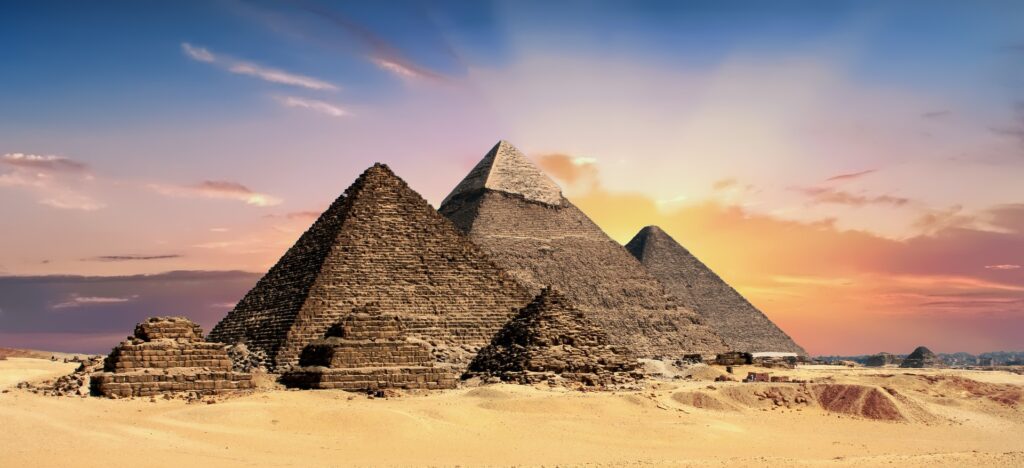The pyramids of Egypt are some of the most famous and enigmatic structures ever built. These towering monuments were constructed by the ancient Egyptians thousands of years ago, and they continue to fascinate and mystify people around the world.
But why did the Egyptians build pyramids? What was their purpose, and how were they built? Read on to find out more!
Why Did the Egyptians Build Pyramids?
To answer these questions, we need to look back at the history of ancient Egypt. The Egyptian civilization emerged around 3100 BCE, and it quickly became one of the most advanced and sophisticated societies of the ancient world. The Egyptians were skilled engineers, architects, and mathematicians, and they left behind a legacy of incredible achievements, including the pyramids.
The first pyramids were built during the Old Kingdom period, which lasted from around 2686 BCE to 2181 BCE. The earliest known pyramid is the Step Pyramid of Djoser, which was built by the architect Imhotep around 2630 BCE. This pyramid was originally designed as a mastaba, a flat-roofed rectangular structure used for burials, but it was later expanded into a six-level pyramid.
But Why Build Them?
So why did the Egyptians build these monumental structures? There are several theories, but the most widely accepted one is that they were built as tombs for pharaohs and their consorts.
The pharaohs were believed to be divine beings, and they were accorded immense respect and power by the Egyptian people. When a pharaoh died, it was believed that their soul would journey to the afterlife, where they would be judged by the gods and granted eternal life if they were deemed worthy.
To ensure that the pharaohs had a comfortable and secure afterlife, they were buried with a vast array of riches, including food, clothing, jewelry, and even servants.
The pyramids were designed to serve as massive tombs for the pharaohs and their families. These structures were built to withstand the ravages of time and the elements, and they were carefully constructed to house the pharaoh’s body and all the goods that they would need in the afterlife.
The pyramid was also intended to be a symbol of the pharaoh’s power and authority, and it was designed to impress and awe their subjects.
An Enormous Undertaking
Building a pyramid was an enormous undertaking that required the labor of thousands of people. The construction process could take decades, and it involved quarrying massive blocks of stone, transporting them to the building site, and then carefully arranging them to form the pyramid’s shape.
The workers who built the pyramids were not slaves, as is often believed, but were skilled craftsmen and laborers who were paid for their work.
Despite the incredible effort and resources that went into building the pyramids, they were not always successful in protecting the pharaohs’ remains.
Many of the pyramids were robbed of their treasures and the bodies of the pharaohs were desecrated. Nevertheless, the pyramids continue to fascinate people to this day, and they remain a testament to the incredible skill and ingenuity of the ancient Egyptians.
Final Thoughts
The Egyptians built pyramids as tombs for their pharaohs and their consorts. These massive structures were designed to protect the pharaoh’s body and all the goods that they would need in the afterlife, and they were also intended to be a symbol of the pharaoh’s power and authority.
Building a pyramid was an enormous undertaking that required the labor of thousands of people, and the construction process could take decades. Despite the fact that many of the pyramids were robbed of their treasures, they remain a testament to the incredible skill and ingenuity of the ancient Egyptians, and they continue to inspire and awe people around the world today.

